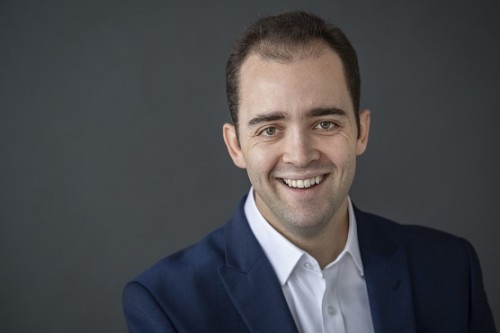 United Kingdom Korngold & Tchaikovsky: Carmine Lauri (violin), Oxford Philharmonic Orchestra / Jamie Phillips (conductor). Sheldonian Theatre, Oxford, 6.3.2019. (CR)
United Kingdom Korngold & Tchaikovsky: Carmine Lauri (violin), Oxford Philharmonic Orchestra / Jamie Phillips (conductor). Sheldonian Theatre, Oxford, 6.3.2019. (CR)

Korngold – Violin Concerto in D major, Op.35
Tchaikovsky – Symphony No. 5 in E minor, Op.64
Although the two works programmed in this concert were featured on the basis that fate intervened calamitously in the lives of their composers, the compositions themselves exhibited a thrilling defiance of that, made all the more tangible by the energetic direction of Jamie Phillips on the podium, called in to replace Ben Gernon.
A Violin Concerto in D major, Op.35 to open the performance would more naturally put one in mind of Tchaikovsky’s example. But in this instance, Korngold’s much less often played essay in the genre was given a welcome airing instead. Having escaped the Nazi threat in his native Vienna, Korngold made a name for himself in Hollywood composing a series of acclaimed film scores, some of which he mined as the thematic basis for this Concerto. Certainly it is known and loved for its Romantic effusions of melody and rich orchestration, suggestive of the extra-musical connotations they bear. But Phillips wisely led a more reticent interpretation of the work so that its more symphonic character came out rather than simply constituting a medley of hit themes from Korngold’s back catalogue of film music.
That is not to say that the Oxford Philharmonic’s performance lacked dynamism or direction, as the opposite was the case, particularly with the sparkling playfulness of the finale which develops the principal subject of the first movement in cleverly engaging ways. Instead their reading was an intelligent and lively integration of the Concerto’s attractive themes within a generally consistent soundscape (complete with vibraphone and celesta) that relished the Impressionism of the languid, sultry opening, and the more full-blooded passages which followed in the Moderato nobile first movement.
Carmine Lauri dedicated the performance of the Concerto to the memory of the recently deceased André Previn, under whom he had also played the work. A lyrically impassioned and broad line ran through his interpretation but avoided any brash attack on the bold themes of the score by sustaining a rhapsodic freedom that was intriguingly like a Vaughan Williams composition at times. He reached a burning intensity in the first movement’s recapitulation, giving way to the more sweetly spun Romance second movement, and a skittish finale, all mastered with ease and demonstrating an admirable familiarity with the work.
For an encore Lauri played a solo arrangement of Tárrega’s Recuerdos de la Alhambra, which took on a quite different character from its original guitar version, with the disembodied melody picked out high up in the violin’s register, anchored by oscillating notes to ground the chords, and remarkably speedy but even passagework in between.
Tchaikovsky wrestled with fate in each of his last three numbered symphonies, as he sought to come to terms with his more personal demons in the form of his homosexuality and highly-strung emotional life. Whilst there was a weary but deliberate tread in the slow opening of the first movement in Phillips’s performance, the rest of the Symphony No.5 was enthrallingly alive with a Beethovenian sense of determination and purpose. Indeed, at several unrelated points Wagner’s words about the latter’s Symphony No.7 as being the apotheosis of the dance might almost have been applied to this work in the way that its rhythms packed such a punch. Phillips’s tempos were brisk, though not unduly fast for the sake of it, enabling the orchestra to build quite a head of steam towards the various climaxes of the first and last movements in particular. The orchestra’s previous performance of the work under their chief conductor, Marios Papadopoulos, sustained some powerful climaxes too, but that was more by sheer weight of sound rather than the lithe accrual of momentum as here, though as an ensemble they were still impressive.
The horn solo of the Andante second movement was somewhat mundane and clipped, failing to unfurl with the full expressive potential of the memorable theme, and not quite engaging with the yearning phrases of the clarinet which amorously responded to it. The third movement waltz was mercurial and energetic, even excitable in its fast pace, and could have afforded to let up just a little for the sake of nuance and variety, but otherwise its vigour was consistent with the rest of the performance. These are small points, however, as this overall taut and high-spirited account of the Symphony told greatly in its favour, vindicating Phillips’s ardent vision of it.
Curtis Rogers
